
The demise of the British pub has been greatly exaggerated. In Ellastone, Staffordshire, The Duncombe Arms has stylishly risen from the rubble to be more than just a pub. It’s a restaurant with a Michelin Bib Gourmand, a tasteful boutique hotel, an art gallery and an inspirational lesson of interior design. With sweeping panoramic views over the gently sloping Dove Valley, the rejuvenated Dunscombe Arms is looking better than ever.
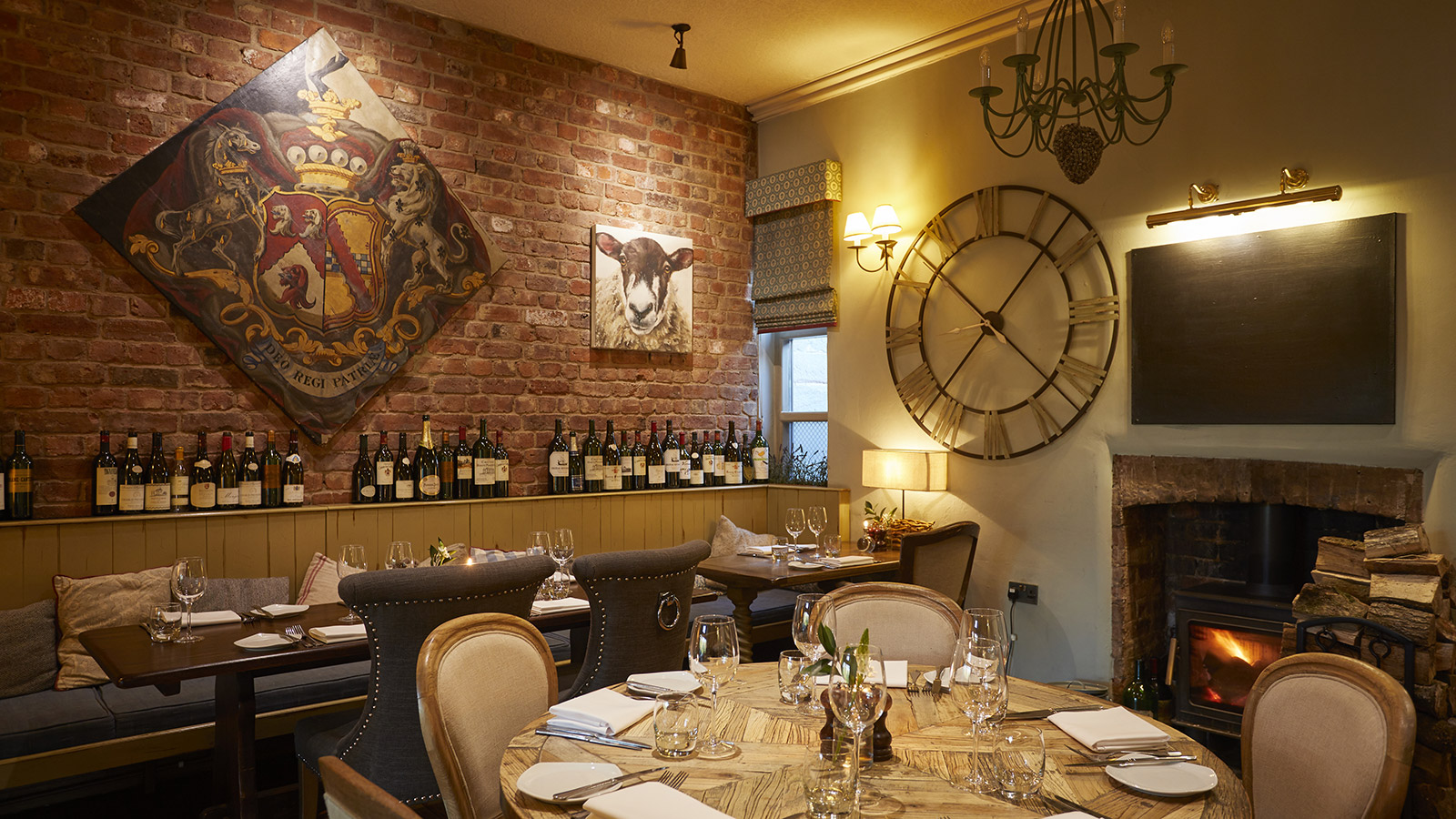
“Ten years ago we drove past the pub every day. It was in a sorry state, boarded and derelict,” says Laura Greenall. All the more traumatic for her, as the fading coat-of-arms was that of her family. You can trace Laura’s ancestry on the Duncombe family tree displayed on the walls of the bar.
Originally opened in the 1850s, the pub would have been packed with thirsty farmworkers, blacksmiths, coopers and some of the 15 gardeners from nearby Wootton Hall. As a quintessential English village, Ellastone was probably the model for the tight-knit community of Hayslope in George Eliot’s first novel Adam Bede. Today, there is still a parish church on Church Lane and honesty boxes along the street for villagers to buy courgettes, eggs and jam.
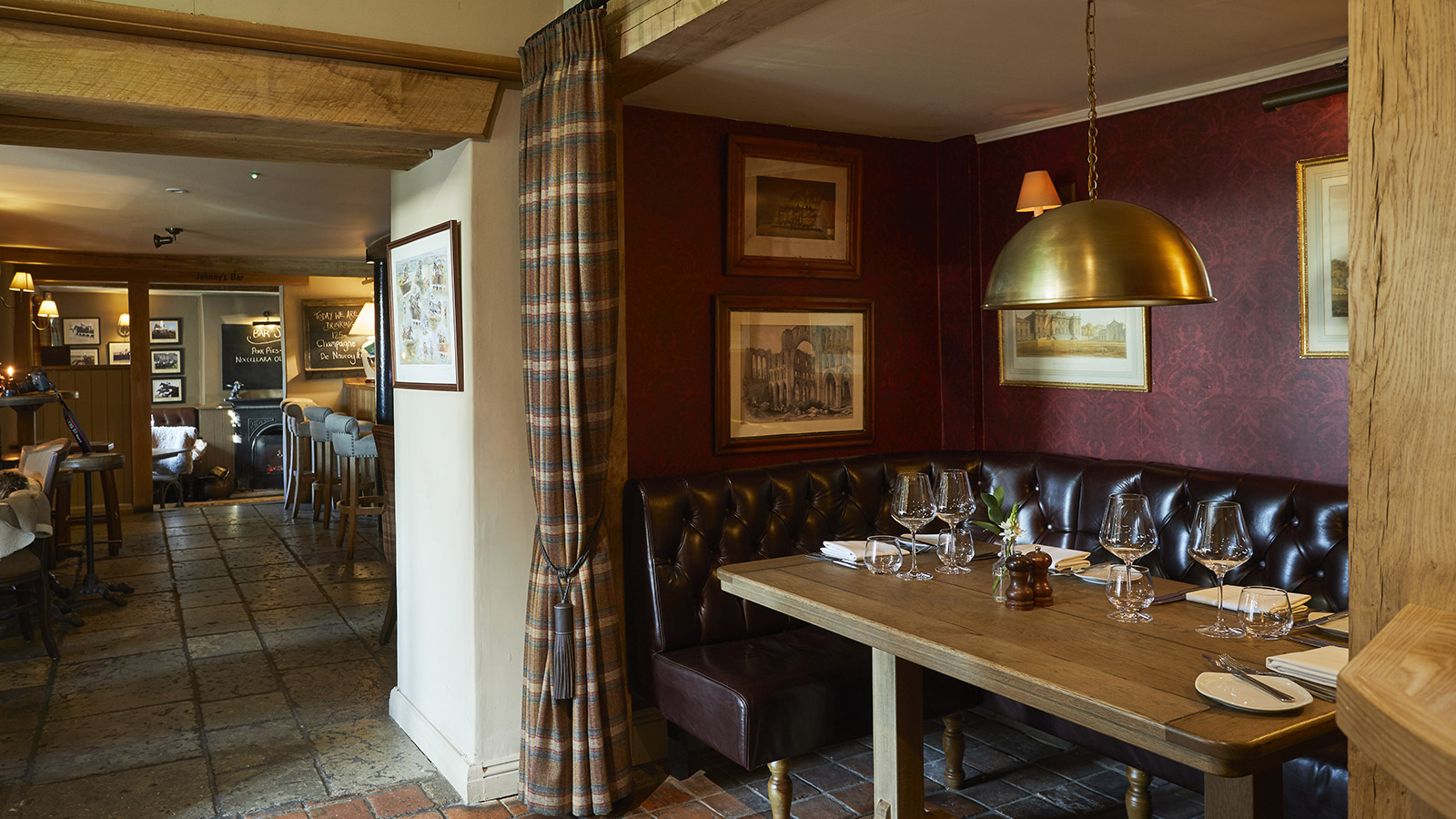
Laura and her husband Johnny, from the Greenall brewing family, restored the pub and it reopened in 2012.
“Really It is an extension of our home,” says Laura, explaining the eclectic decor. Through a winding warren of rooms, above open fires and wood-burners, amongst beams, nooks and crannies hang black-and-white horsey photos.
“Johnny was a jump-jockey and that’s my grandfather,” says Laura pointing out a nostalgic photo from a cluster. Framed obituaries commemorate the great and the good: actors, jazz musicians, and horse-racing legends. On exposed brickwork, hang bold farmyard portraits of cows, pigs and sheep by village artist Wendy Darker.
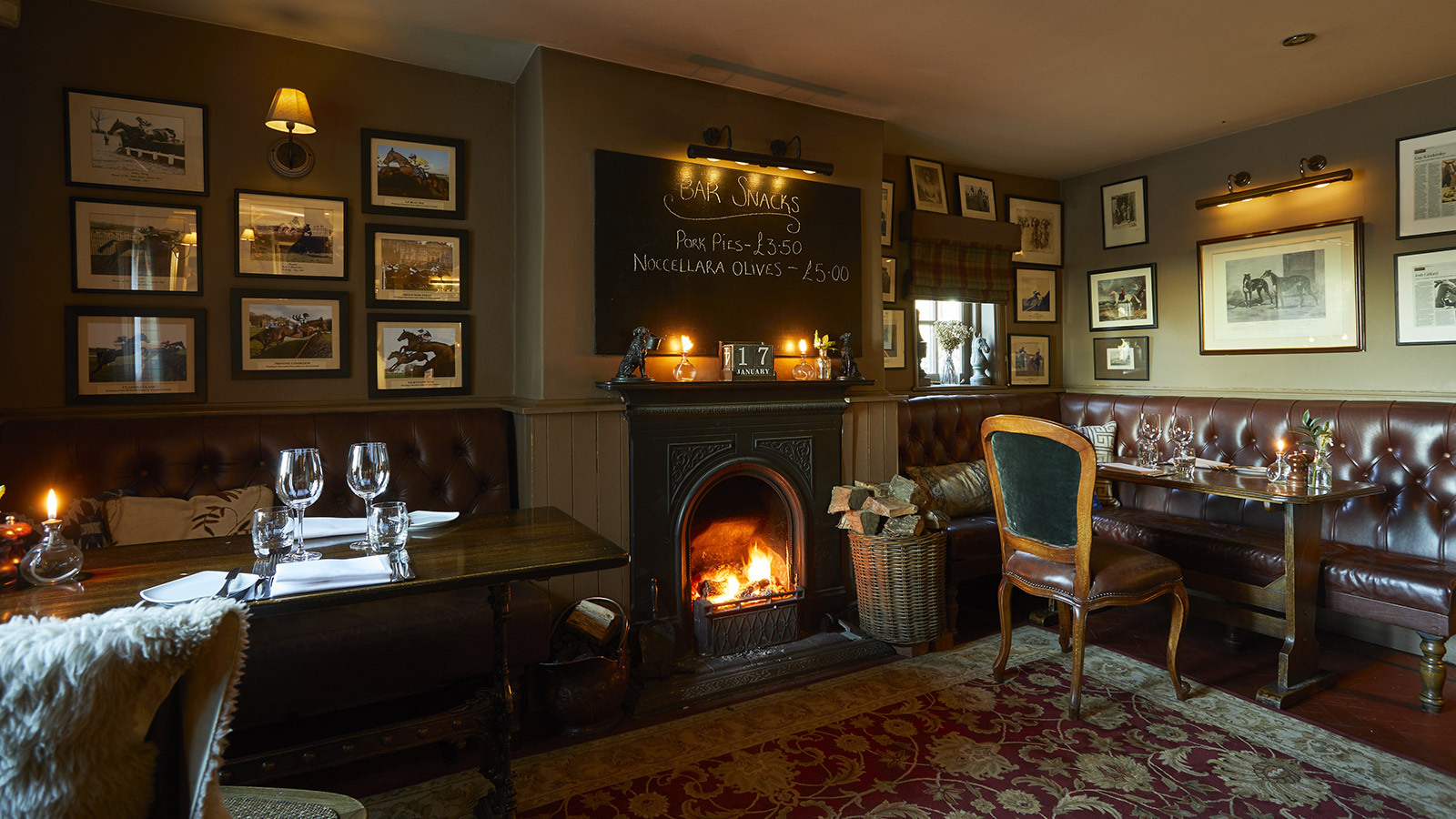
The food attracts diners from many a mile. For the award of a Michelin Bib Gourmand the inspectors are looking for the hallmarks of Michelin star food: high-quality sourcing, attractive presentation and the essence of the chef’s personality – but at a lower price.

Jake Boyce, the chef, has a desire to seek out lost tastes. A delicate, almost translucent golden beetroot, from a local Ashbourne supplier, accompanies a torched mackerel starter. Potatoes are selected from over one hundred varieties grown on Northumbrian farms. Black Cabbage is another Boyce favourite as he tweaks pub classics. This is pub grub gone gourmet. But some ingredients come from closer to home, staff bring in nasturtiums for decoration as well as cucumbers and tomatoes grown in their gardens.
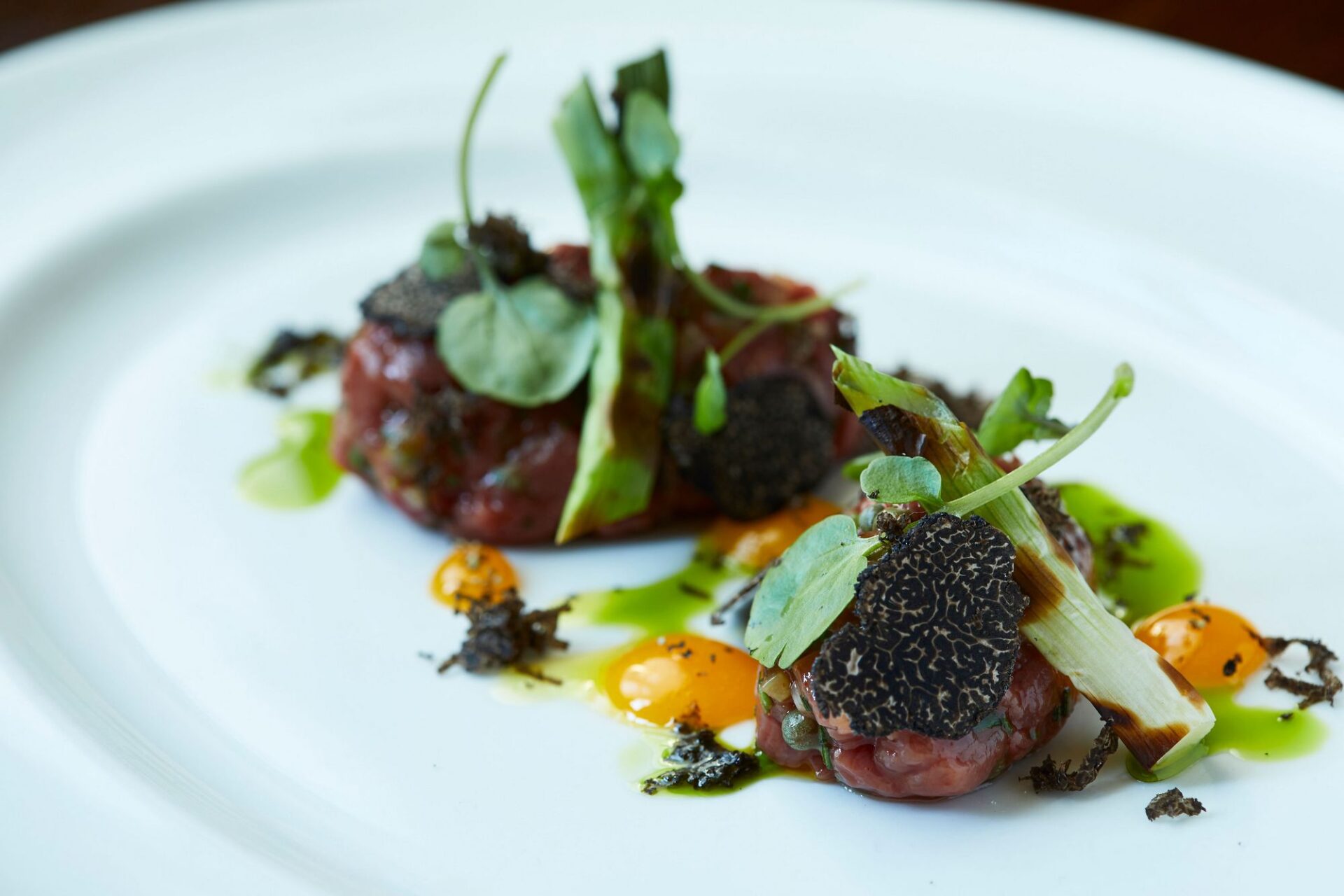
Currently, Boyce is working on the autumn menu, running tasting sessions for staff feedback. Most of the pub classics will feature corn-fed chicken, battered fish, a burger and the famous veal chop. Though there will be some new additions, prime beef that has been rubbed with Himalayan salt and hung for 36 days, crabs from Cornwall and locally sourced grouse.
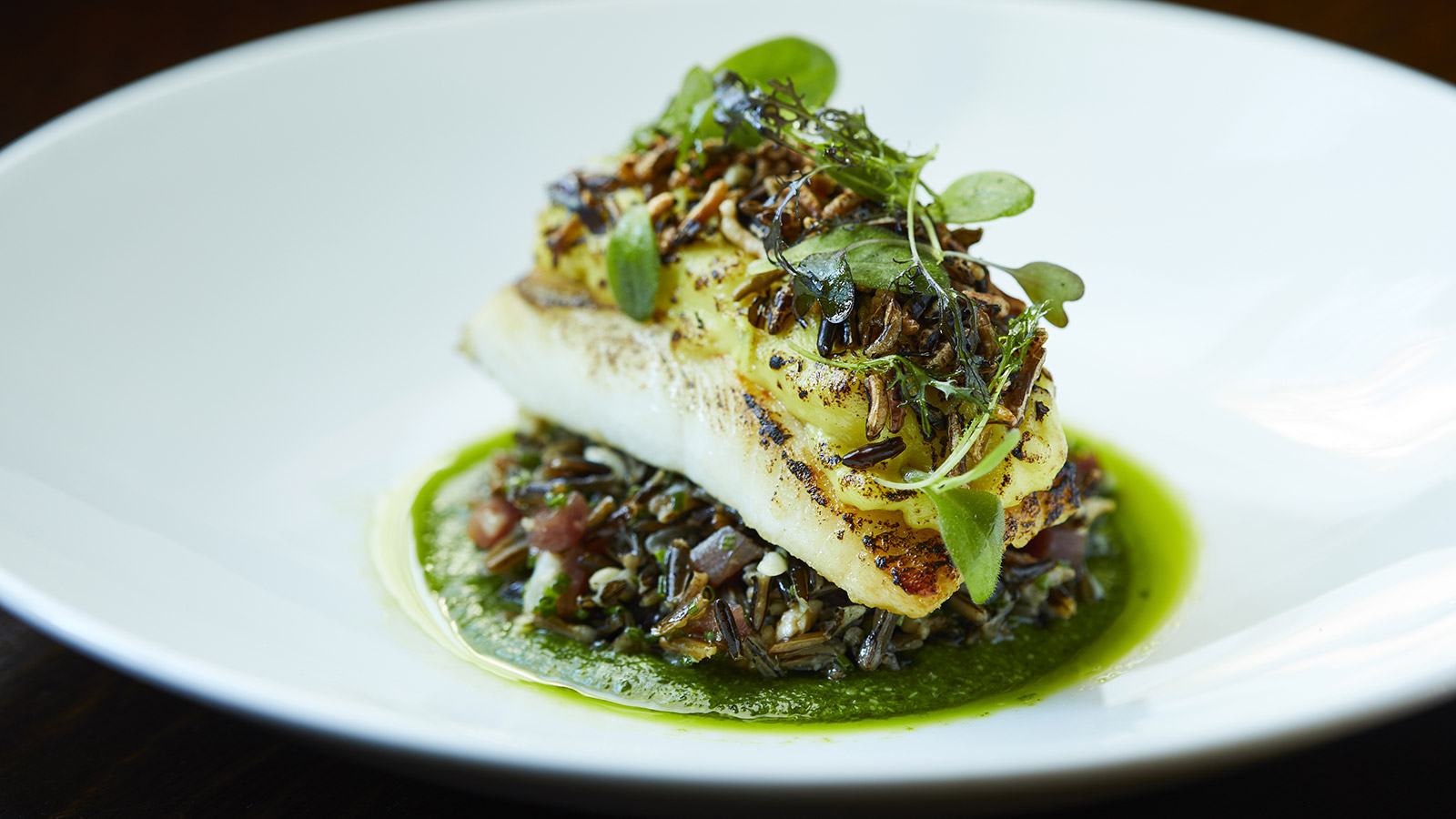
Over 100 wines, often available by the glass, are kept in the cellar. With a brewery background, Johnny Greenall also curates impressive collections of gins and whiskies, also, appropriately, a dedicated Duncombe Ale.

Relaxed and drowsy at the end of the evening, guests appreciate the short walk, past the walnut tree to detached Walnut House to slip into slumber amongst Egyptian cotton sheets and air-conditioning, if required.
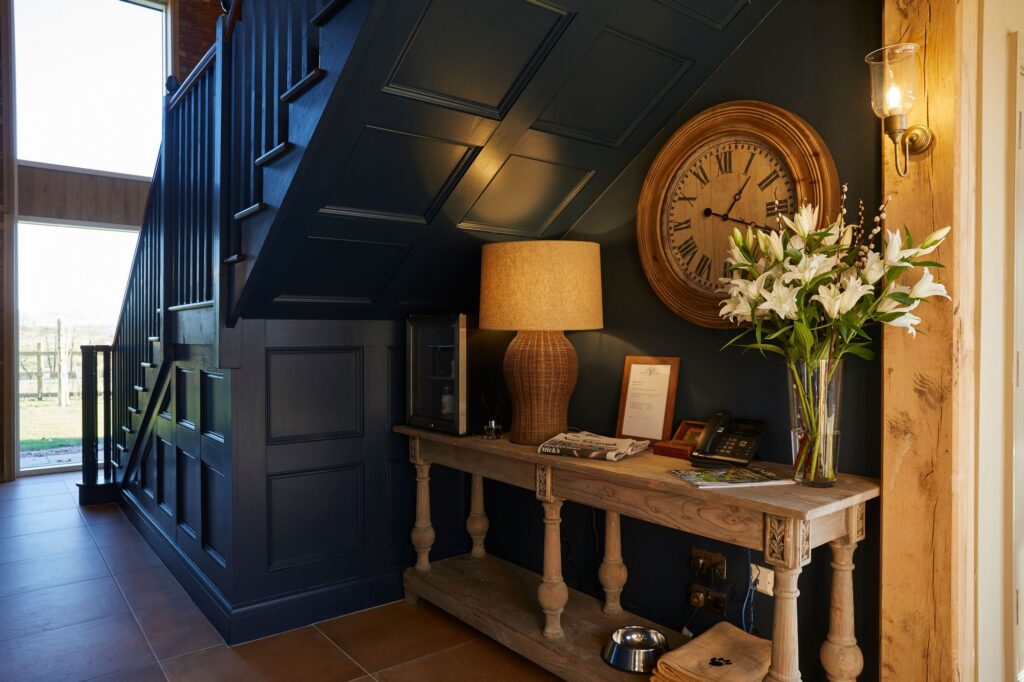
Each of the ten rooms or suites has its own theme, announced on a round of oak cut at a local saw-mill. There’s Ashbourne blue, peony, hops, Shetland plaid and green fern. Green is the theme of our restful cocoon: green-themed artwork hangs on walls papered with a green geometric pattern. Thick tweedy textured hunter green curtains hang across the Juliet balcony window. On the wooden floors sits an oatmeal rug with a subtle pistachio green border.
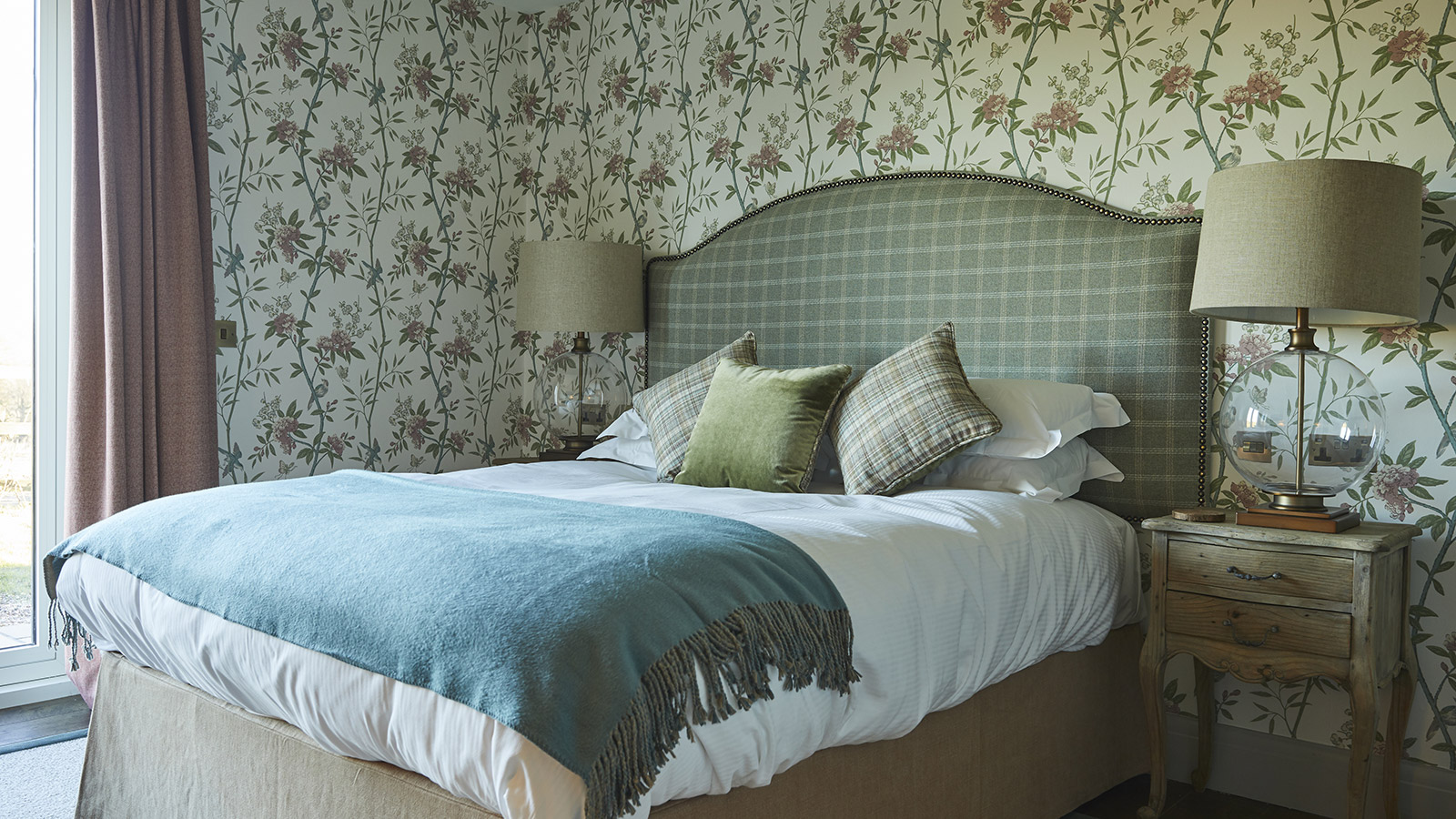
“I had dozens of colour charts, swatches and ideas,” says Laura of her Walnut House project that has become a subtle design fest of Mulberry fabrics, Farrow & Ball paints plus GP & J Baker wallpapers. Andrew Martin, the man who creates wallpapers from National Gallery pictures, making wallpaper into an art form, is a favourite too. In Game Birds, appreciated by hunting visitors, and Flying Ducks, heritage wall-papers have been redesigned for 21st-century tastes with lighter backgrounds and more vibrant colours for the birds.
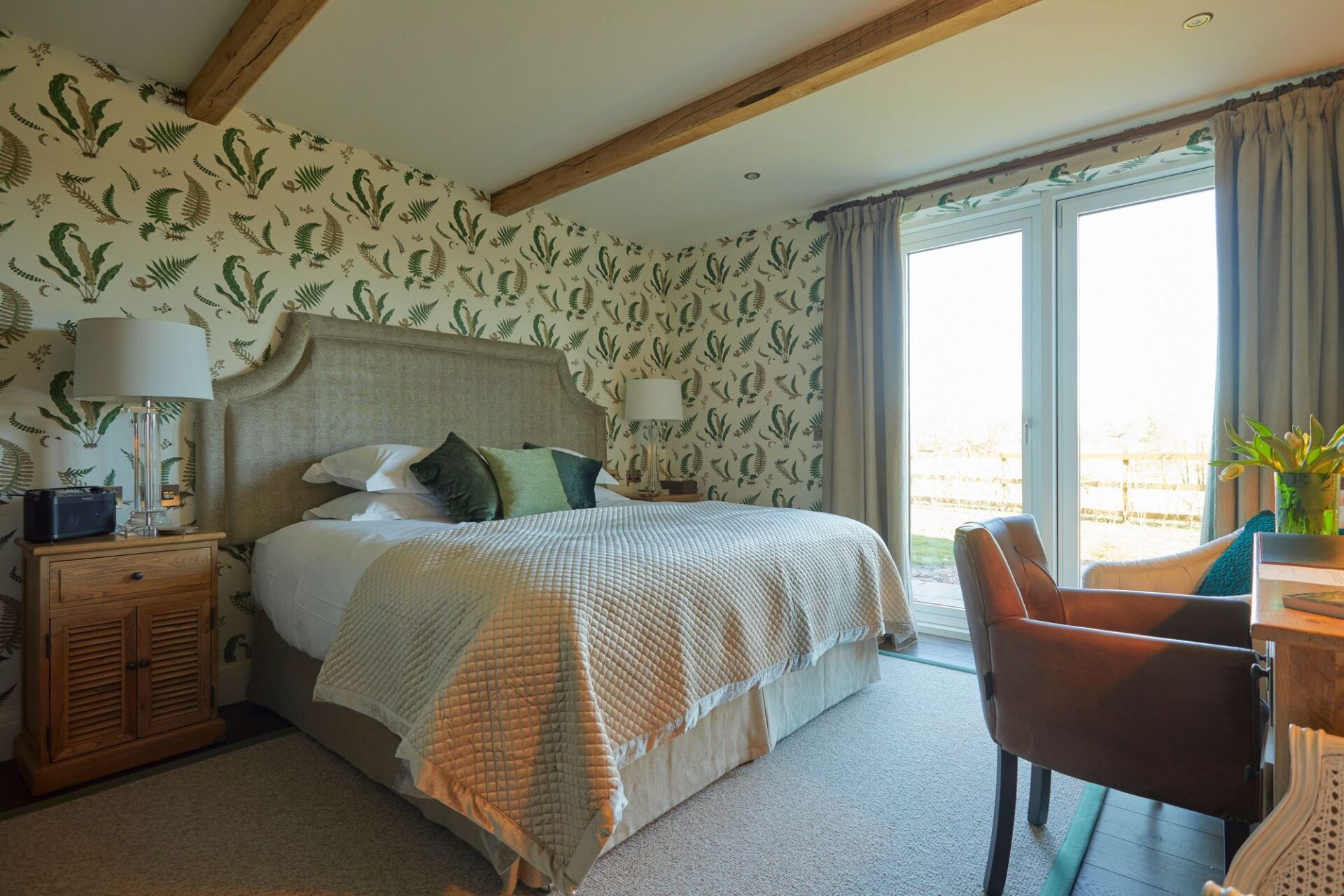
Walnut House is an art gallery too. Many years ago Laura shared a London flat with Robin Light who went on to work for the Crane Kalman Gallery. Seeing Walnut House’s empty walls, Robin suggested that some of the gallery’s canvases could be displayed in Staffordshire. If guests like a piece, they can buy it.
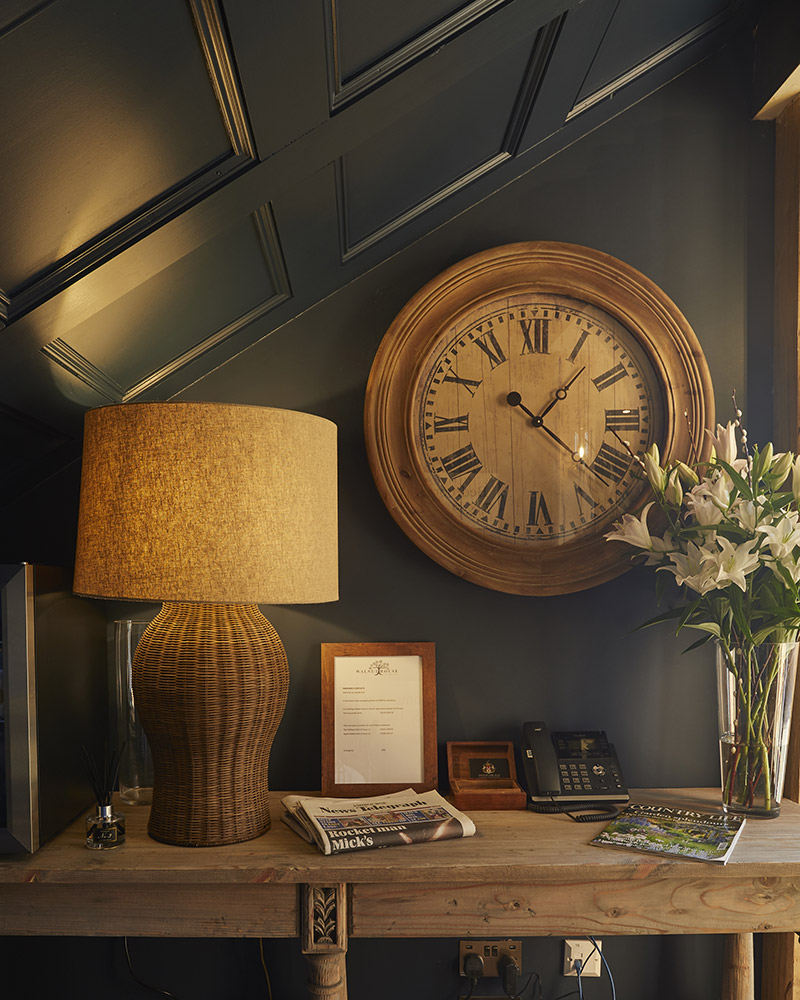
Also, Johnny and Laura invite guests to walk through the woodland gardens of their Wootton Hall home, guided by a map drawn by Wendy Barker. Originally, the gardens were created by Jean Jaques Roussea, the French philosopher, during his exile from France. By the 1860s, the grounds required the labour of 15 gardeners. Today, the gardens feature trees from all over the world.

“The tree of the moment is the Eucryphia, white flowering from the Southern Hemisphere,” explains Johnny, who is a keen dendrologist. “The Hoheria Sexystyloa is also doing rather well,” he adds.
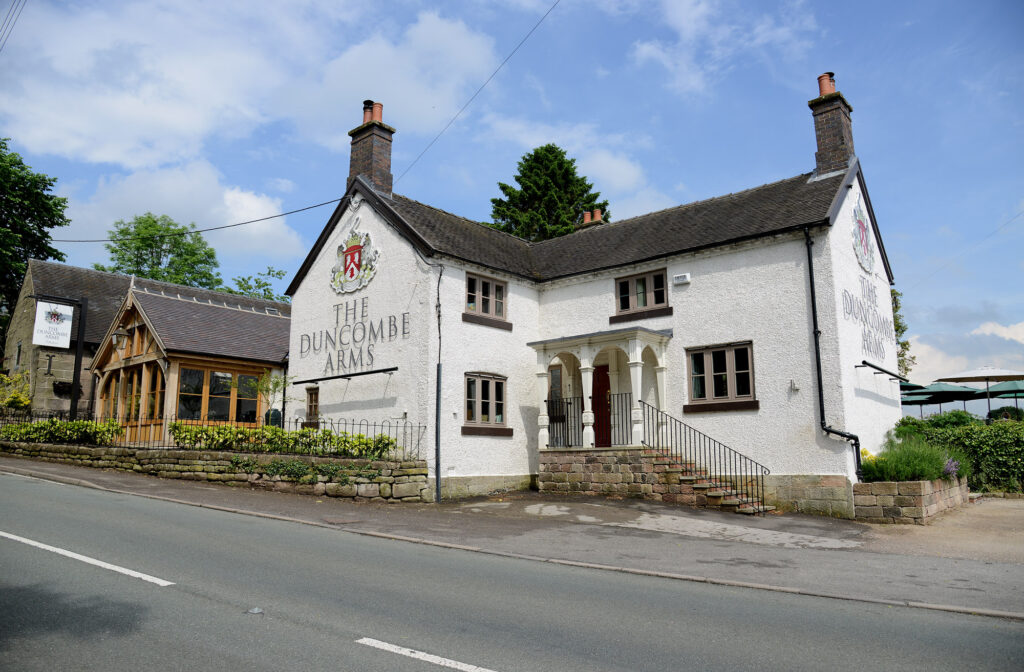
Whilst many villages are losing their pubs, The Duncombe Arms, the warmly welcoming local that we would all like, shows how the Great British pub can adapt, reinvent and thrive. George Eliot would approve.

